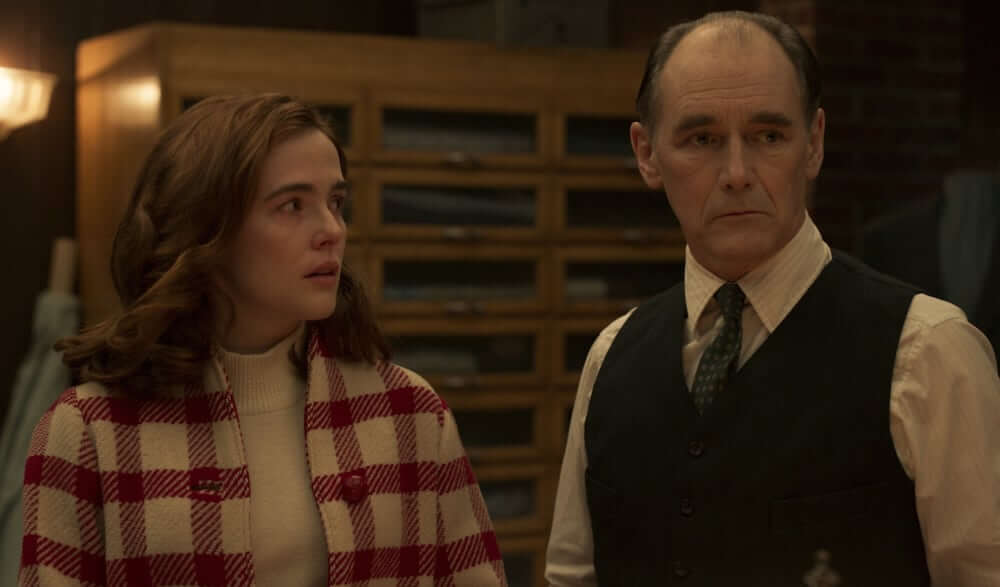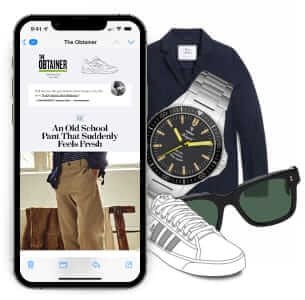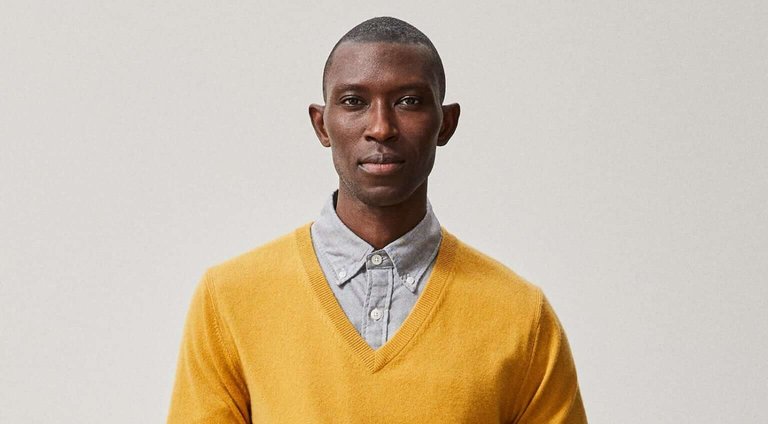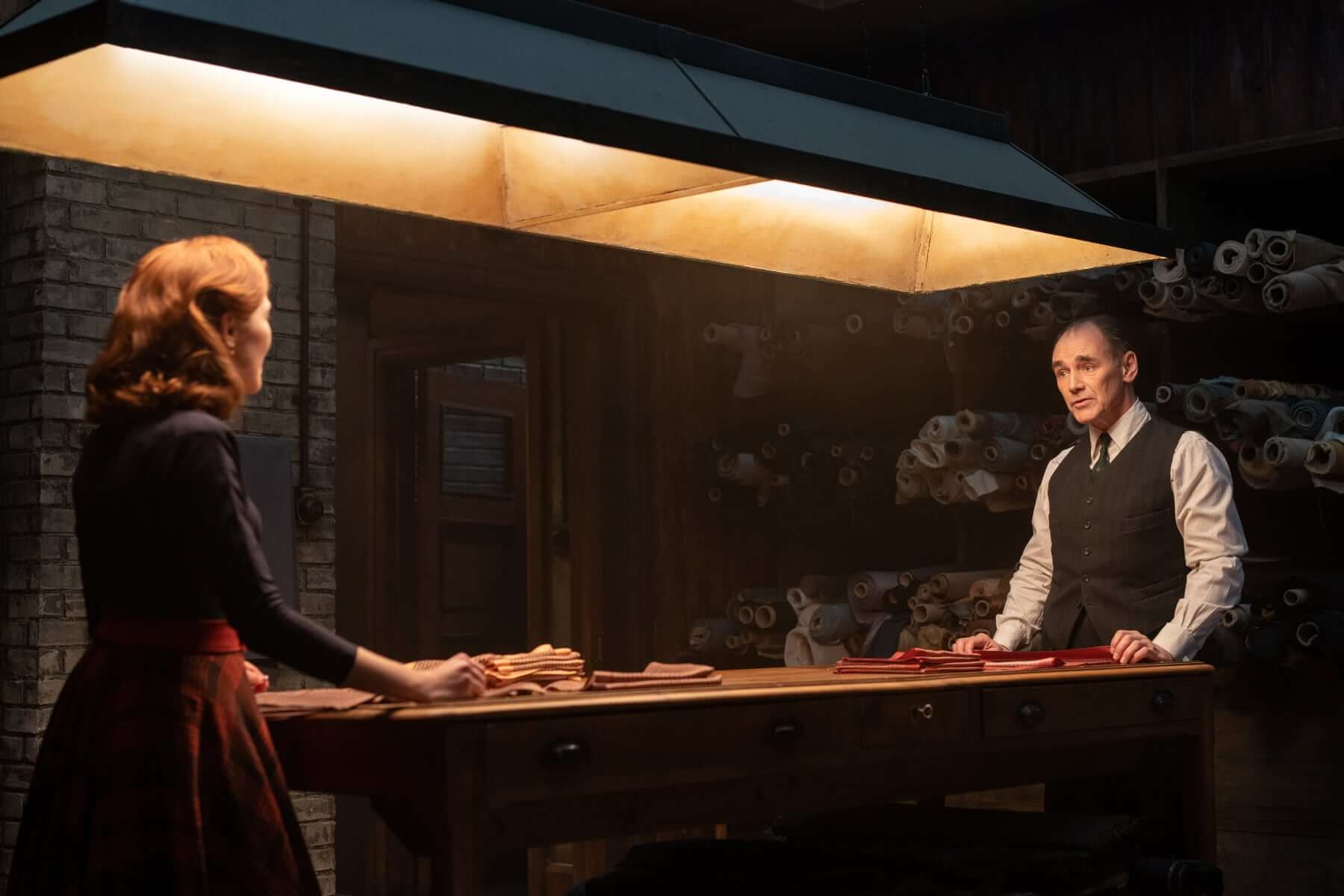
The Year’s
Most Stylish Film
How a Savile Row tailor built
the world of ‘The Outfit’
The Year’s
Most Stylish Film
How a Savile Row tailor built
the world of ‘The Outfit’
Graham Moore’s feature-length directorial debut film starts out with a tailor opening up his made-to-measure shop on a dark, chilly morning in 1950s Chicago. The first dialogue we hear in The Outfit is a voiceover from a distinguished British gentleman: “To the naked eye, a suit appears to consist of just two parts: a jacket and trousers. But those two seemingly solid parts are composed of four different fabrics and are cut into 38 separate pieces. And the process to join them all together requires no fewer than 228 steps.”
Those words, spoken by our genteel protagonist Leonard (played by legendary actor Mark Rylance) alludes to the nature of his business—a bespoke men's clothier—but also to the film itself. Things are rarely as simple as they appear. This movie is stylish on several levels. All the action takes place in Leonard's well-appointed, box-car-long workspace. It feels as though you're a fly on a wall or maybe in the audience of a play. People come and go, but Leonard never leaves, remaining cool and calm throughout an increasingly precarious night.
You see, Leonard isn't merely a tailor. He's a cutter—as in a cutter of patterns and cloth—which is a far more prestigious job, and one he learned through years of training on London's storied Savile Row. After emigrating (or maybe escaping) to America after WWII—perhaps because blue jeans were putting him out of business, as he says, or maybe because he needed a fresh start due to some trouble back home—he built a business catering to the only clientele that can afford bespoke suits as fine as the ones he makes: Chicago's infamous gangsters. As he explains to his secretary, “If we only allowed angels to be our customers, we'd soon have no customers at all.”
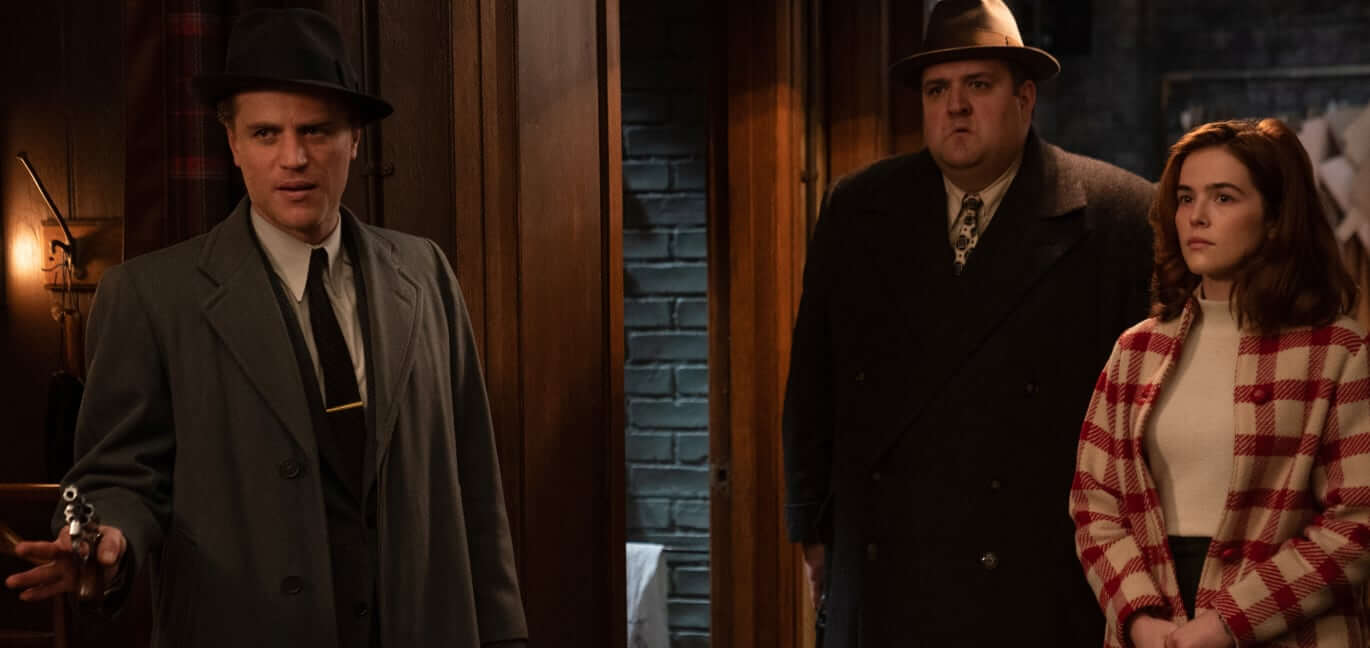
Simon Russell Beale as Roy, Alan Mehdizadeh as Monk and Zoey Deutch as Mable.
His most faithful customers are members of a ruthless crime family, headed by steely-gazed kingpin Roy Boyle (played by fellow Brit Simon Russell Beale), along with his show-off son Richie (Dylan O'Brien). They two, along with their henchmen, not only stop by for suits, but to utilize a mysterious drop box in the back of the shop to pass messages and money back and forth. Leonard simply chooses to look the other way—really, what other choice does he have? You can't help but root for the old guy. Leonard is a quiet kind of cool. The type of guy who tucks into a sandwich and glass of whisky in between pressing a jacket. He's quiet, methodical and precise.
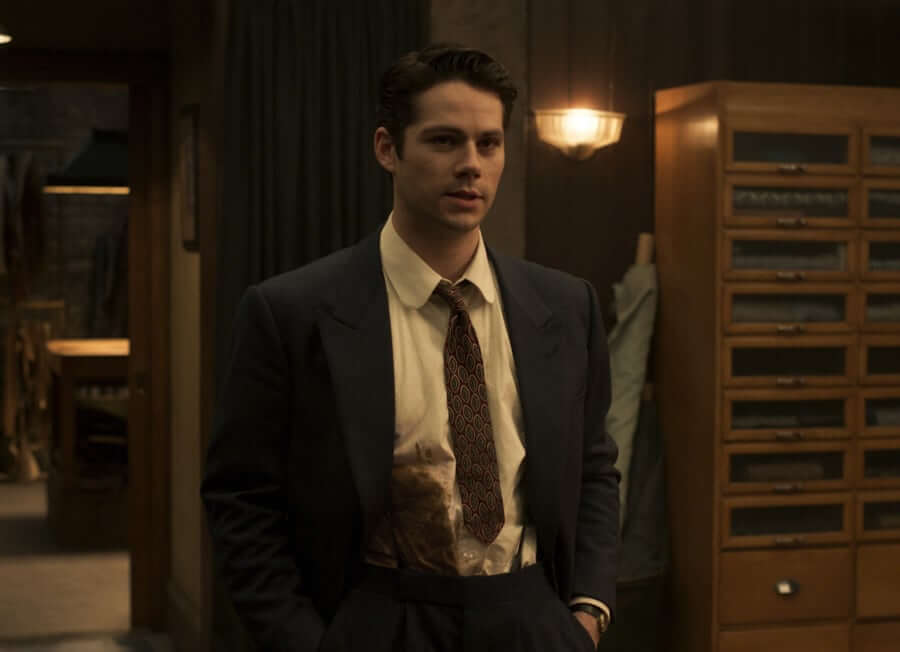
Dylan O’Brien as Richie.
But that uneasy serenity is shattered when Richie is dragged into the shop, bleeding, after being shot in the stomach by a rival clan. That's when the twists and turns start and this simple crime story morphs into a Hitcockian thriller, all confined within the walls of this shop. This is one of the most stylish films we've seen in years—despite the occasional bloodshed, there's an aesthetically pleasing voyeuristic quality to it. The cinematography, interior details and wardrobe make it an absolute pleasure to watch.
Of course, the reason why these guys look so damn dashing is because all of the suits were handmade by Huntsman, the Savile Row tailor with an extraordinary history that stretches back over 170 years. To say that it's an iconic brand would be something of an understatement. The house has always prided itself on its rich heritage and has built a solid reputation as one of the finest and most innovative bespoke tailors on the Row.
In a voiceover, while cutting a suit, Leonard says, “All clothing says something ... I've had men walk into my shop and boast 'Oh, I don't care about what I wear,' and assuming that's true, doesn't that say something, too?”
Campbell Carey is the head cutter and creative director of Huntsman, and was responsible for creating the film's wardrobe of suits, shirts and overcoats. How do the suits in a film from the 1950s differ from what he's cutting for clients today, I wondered. A lot of time and effort went into making sure that the clothes were true to the period and also to the country, he tells me. “You see, Leonard's suits would've been made back in Savile Row in the late '40s, but the suits he was making for the gangsters were more American, 1950s style,” Carey says.
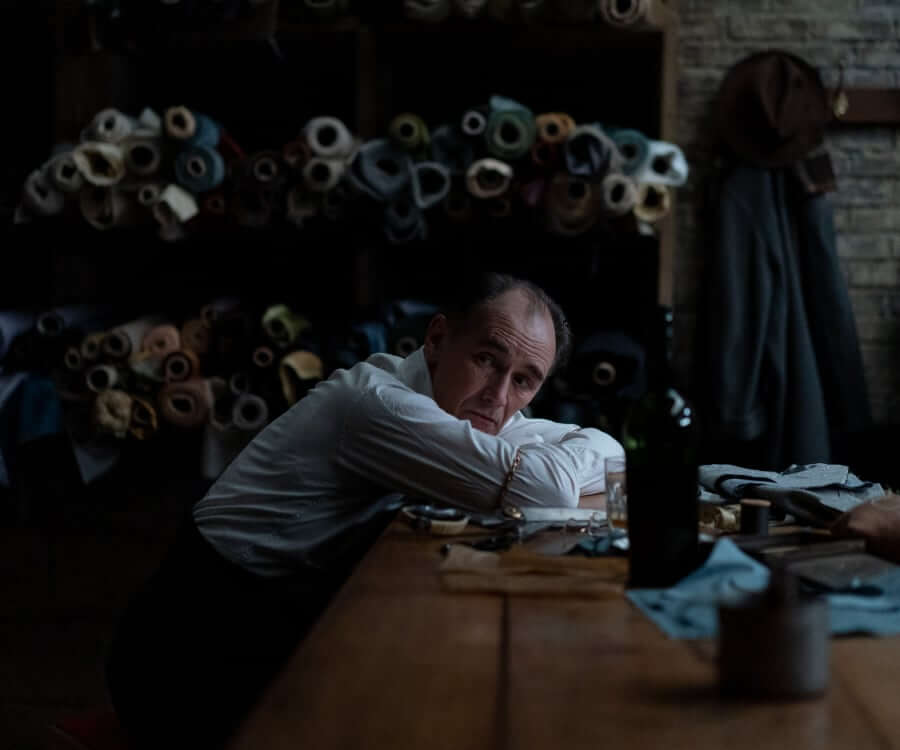
Mark Rylance as Leondard.
Subtle details like sleeve construction and lapel size were what Carey says Huntsman really sweated. “Leonard's character was very austere. He wanted to blend in, while Richie was brash and had something to prove, so his shoulder line was cut just a little too wide and the lapels were a bit oversized—it was all about showing off.” On Savile Row, there's an often-quoted saying that the cut of the suit should do the talking for a man. “But for someone like this kid, he wants everything to show just how much he spent on it—and that was fun to create.”
In addition to making the clothes, Carey made sure Mark Rylance was schooled on how to look, sound and work like a proper cutter. “He was only with us for about a week, shadowing me here in the shop, but we wanted to make him look like he'd been wielding these shears for decades,” he says, holding up a massive pair of scissors. “They're super heavy, they weigh about five pounds and the blades are super long—so you've got to really look like you know what you're doing.” But by the third day, he was already striking and cutting his own cloth for the suit Huntsman made him.
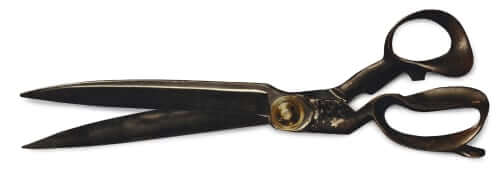
In the film, Leonard has an emotional attachment to his shears. And I wondered if that was true for Carey as well. “Oh absolutely,” he says. “You don't let anyone else use your shears. Ever. It's like a fountain pen or something to that effect. They're yours and yours alone. Often they've been passed down from generation to generation—in fact, mine were made in New Jersey in the late 1800s. And they've probably only been sharped once or twice.”
He showed them to me up close, and you can see the hand-forged steel and cloth-wrapped handles. These were the blades that cut all the suits in the film—an arduous, meticulous job that creates garments meant to be worn for a lifetime. But for the film, these suits were riddled with bullet holes and prop blood. “Oh, it's so distressing, to see blood splattered onto a sleeve of this beautiful jacket,” Carey says with a laugh. “When someone's spent 80 hours making this suit and it just gets destroyed ... but that's the movie business and where a good portion of this film's budget went I guess.”

Watch
The Outfit is only in theaters, nationwide, on March 18th. Find your local showtimes at Focus Features.
